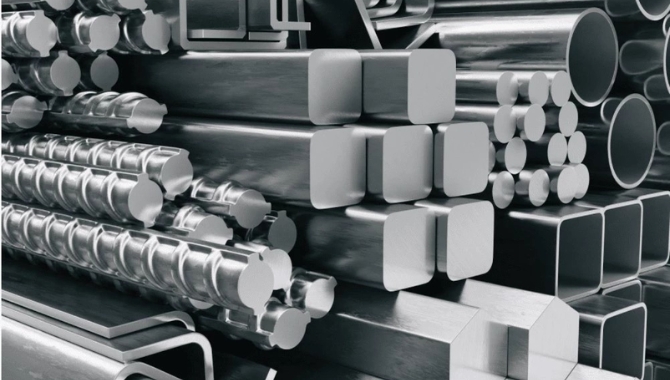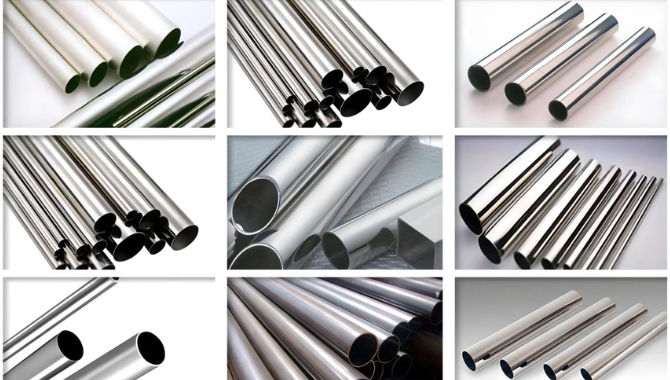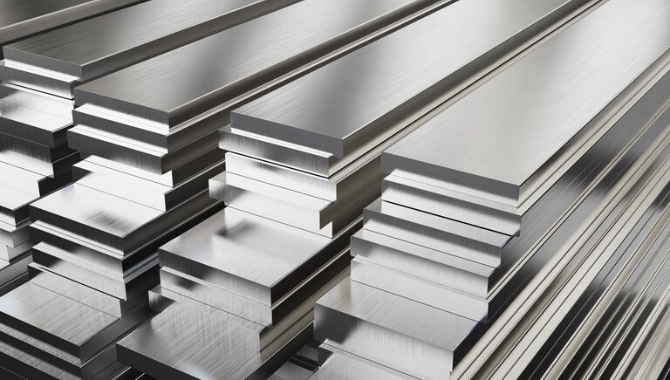Stainless steel is a multipurpose metal that has become valuable in different industries and everyday operations. It has lots of benefits like corrosion resistance, durability and heat resistance. Whether you work in engineering, design or just interested in materials science, learning these important characteristics will give you useful information about this metal.
Let’s discuss stainless steel characteristics one by one in detail.
1. Corrosion Resistance

The ability of a material to withstand degradation by environmental factors like moisture, acids and salt is called corrosion resistance. Stainless steel alloys contain iron, chromium (at least 10.5% to be considered as stainless steel) and other elements like molybdenum and nickel too.
Its outstanding corrosion resistance is usually due to chromium. It forms a thin and self-healing passive film of chromium oxide on the surface, when exposed to oxygen. This protective layer helps to stop further corrosion and oxidation.
Corrosion resistance is important in industries such as chemical processing and maritime where materials are usually visible to aggressive conditions. For example, in shipbuilding and offshore structures mostly stainless steel is used because of its ability to handle seawater without corroding. The chemical industry also uses it for reactors, tanks and pipes to handle corrosive material.
2. High Strength and Durability
Stainless steel’s outstanding durability and strength are due to its particular alloy composition like nickel, molybdenum and chromium. These elements make a solid solution which gives strength to the metal structure. Chromium forms a protective oxide layer, while nickel improves flexibility. Molybdenum also increases resistance and hardness to pitting corrosion.
This mix of properties makes stainless steel very useful for different industries. In construction projects, due to its high tensile strength it is used in reinforcement bars and load bearing structures. Automotive manufacturers use stainless steel for structural parts and exhaust systems because of its heat tolerance and corrosion resistance. In aerospace industry, the material’s ability to handle high temperatures and strength-to-weight ratio makes it appropriate for engine components and aircraft frames.
3. Heat Resistance
Stainless steel is preferred due to its outstanding heat resistance in high temperatures. Its chromium content creates a protective oxide layer which increases some grades’ oxidation resistance up to 1200°C. Austenitic stainless steels have nickel and higher chromium content which provides better creep oxidation resistance (above 550°C) and creep strength.
These heat-resistant qualities make stainless steel important for many applications that are visible to high temperatures like automotive components, heat exchangers and industrial furnaces. Kitchen appliances like ovens and grills also use stainless steel because of its characteristic to handle high temperatures while keeping functionality and appearance.
4. Aesthetic Appeal
Stainless steel characteristic also includes undeniable visual appeal. Its shiny surface reflects light which gives it a modern and smooth look. This aesthetic appeal is due to its different microstructure and chromium content which makes an oxide layer. It results in clean and timeless look that keeps its shine and resists tarnishing over time.
From mirror-polish to brushed or matte textures, these versatile finishes further improve stainless steel’s aesthetic appearance. Architects usually use stainless steel in building decorative elements, facades and elevators to make a contemporary look. Interior designers also prefer stainless steel appliances, fixtures and countertops to add a touch of sophistication.
5. Hygienic Properties

Stainless steel usually shows outstanding hygienic properties which makes it appropriate for food and medical industries. Its non-porous surface prevents mold, bacteria and other microbes from adhering or entering. The seamless, impenetrable barrier made by the chromium oxide layer further stops microbial growth. Its corrosion resistance and inherent cleanliness properties guarantee long-term sterility in important environments.
Stainless steel is easy to sanitize and clean because of its smooth surface. This metal can also handle high temperature sterilization and harsh cleaning chemicals without degradation. Research shows stainless steel is much better at keeping hygiene after cleaning than other materials like plastic. It harbors 75% less bacteria than plastic which makes it appropriate for medical and food machinery fields where hygiene is important.
6. Recyclability
Stainless steel has outstanding recyclability which makes it appropriate for sustainable material choice. It is 100% recyclable and can be reprocessed many times without loss of quality. This process also uses 33% less energy than producing new steel. Recycling stainless can also decrease the need for primary production which preserves raw materials like iron, chromium, and nickel. Almost, 60% of new stainless steel is produced from recycled sources which minimizes its impact on environment.
Many industries now prefer recyclable materials to meet sustainability goals. Stainless steel’s recyclability follows the principles of circular economy which saves resources and decreases waste. Its durability and long lifespan make it suitable for consumer goods, construction and cars. Environmental rules and consumer demand for green products are also driving this pattern.
7. Cost-Effectiveness
While stainless steel’s initial cost is higher than carbon steel but it is justified by its longer lifespan. Its corrosion resistance and durability also decrease replacement and maintenance costs over time. In fact, life cycle cost analysis shows stainless can be 15-25% cheaper than carbon steel over a 30 year period.
Carbon steel’s lower initial cost is stabilized by frequent maintenance and painting to avoid corrosion. Stainless steel removes these ongoing costs due to inherent corrosion resistance. In harsh environments, stainless can last up to five times longer than carbon steel which provides substantial savings in long term.
8. Magnetic Properties

The magnetic abilities of stainless steel vary depending on crystal structure. Ferritic and martensitic types of grades (409, 430, 410, 420) are magnetic because of their body-centered cubic structure. While austenitic grades (304, 316) are usually non-magnetic as they have face-centered cubic structure, cold-working can make austenitic grades slightly magnetic. Duplex stainless steels have both ferritic and austenitic structures, so it shows moderate magnetic properties.
Magnetic stainless steels have different uses. They are used in power generation transformer cores, MRI machines of healthcare and magnetic separators in food processing. Whereas non-magnetic grades are important for laboratory instruments and sensitive electronic equipment where magnetic interference should be prevented.
9. Weldability and Formability
Welding and shaping stainless steel are remarkably easy. TIG, MIG, and resistance welding methods are used to weld most grades. Austenitic grades have low carbon content and resist carbide precipitation during welding which guarantees strong joints.
Austenitic grades provide outstanding ductility. Its different grades can be shaped through different processes like bending, drawing and stamping. Cold working can increase strength while heat treatment after forming can restore corrosion resistance in certain grades.
These characteristics of stainless steel allow the creation of complex shapes and designs in different manufacturing industries. It is also preferred in architectural facades, automotive exhaust systems and kitchen sinks thanks to its multifunctional nature. Its weldability proves invaluable in crafting different industrial tools, sculptures and furniture.
10. Low Maintenance
Stainless steel needs very little maintenance because of its inherent corrosion protection. The self-healing chromium oxide layer decreases the need for protective coatings and frequent cleaning. This self healing characteristic helps stainless steel to keep its structural integrity and appearance in different environments.
The high strength and hardness of stainless steel also make it resistant to wear and tear. It further increases its service life and decreases maintenance costs.
Stainless steel is used in infrastructure like water treatment plants, bridges and public transportation because of its low maintenance. In household items like furniture, appliances, it is also used due to easy cleaning and durability. These characteristics increase material sustainability and decrease long-term costs in different operations.
Conclusion

Stainless steel’s different characteristics make it important in modern industry. Its corrosion resistance, flexibility and outstanding durability provide long-term value for different applications. Learning these characteristics of stainless steel will help you to make better choices in material selection for your design and engineering project needs.
For best quality stainless steel fabrication, KDM Fabrication is the one of the best choices. Our expert team proficiently uses these characteristics to provide you with custom solutions. Contact us today to discuss your stainless steel needs and project details.
FAQs
How Does Stainless Steel Maintain Its Finish Over Time?
Stainless steel has a self-healing chromium oxide layer. This protective film continuously re-forms after damage and protects the surface from corrosion which keeps the surface appearance without any extra treatments.
What are the applications of stainless steel?
Stainless steel is used in different industries like household appliances, chemical plants, food processing, aerospace, automotive and construction due to its flexible properties, corrosion resistance and durability.




